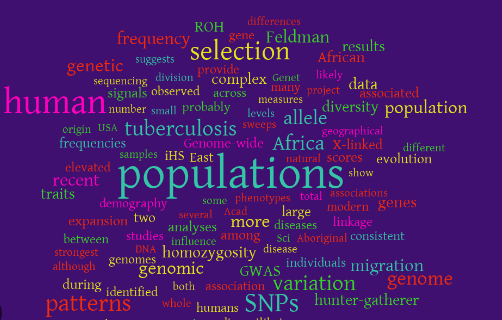Haplotype Evolution and Recombination: Understanding the Dynamics of Genetic variation

The genetic version inspires biological diversity, enabling species to conform and evolve in response to converting environmental situations. At the coronary heart of genetic variants lie haplotypes, the unique mixtures of alleles that outline a character’s genetic makeup. Haplotype rises from the method of recombination, the shuffling of genetic material all through meiosis that generates new combos of alleles within the offspring.
Information about the dynamics of haplotype evolution and recombination is vital for unraveling the genetic foundation of complex developments, predicting the final results of herbal choice, and designing effective strategies for genetic development in agriculture and remedy.
Haplotype Evolution: The Building Blocks of Genetic Variant
Haplotypes are the building blocks of genetic versions, representing the precise combinations of alleles that define a man or woman’s genetic makeup. Haplotypes stand up from the method of recombination, the shuffling of genetic material for the duration of meiosis that generates new combinations of alleles within the offspring. Recombination takes place when homologous chromosomes pair and trade segments of DNA, ensuing in the formation of new haplotypes that differ from the ones of the parental chromosomes.
The frequency and distribution of haplotypes in a population are formed by way of several elements, together with mutation, choice, migration, and genetic float. Mutations are the final source of genetic variants, generating new alleles that could deliver an upward push to novel haplotypes.
Choice acts on haplotypes that confer a fitness gain or drawback, selling the spread of useful haplotypes and the removal of deleterious ones. Migration can introduce new haplotypes into a population or reduce the frequency of current ones. This depends on the direction and magnitude of gene waft. Genetic float is the random fluctuations in allele frequencies because of hazard activities. This can cause the loss or fixation of haplotypes in small populations.
The dynamics of haplotype evolution are complex and rely upon the interplay of these elements and the genetic structure of the trait. In polygenic tendencies, haplotypes can also interact epistatically or additively, leading to nonlinear patterns of variant and selection. In quantitative traits, which exhibit non-stop variants, haplotypes can also make a contribution to the phenotypic variance in a complex and nonlinear way. They make it difficult to predict the final results of selection or genetic development.
Recombination: The Generator of Genetic Variety
Recombination is the process through which genetic material is shuffled for the duration of meiosis. It ensures the formation of new haplotypes that vary from those of the parental chromosomes. Recombination takes place while homologous chromosomes pair and exchange segments of DNA. It develops novel mixtures of alleles that may supply an upward push to new phenotypes and traits.
The frequency and distribution of recombination activities are motivated by using numerous elements. Which include the genetic distance between loci, the bodily structure of the chromosome, and the presence of recombination hotspots or coldspots. Genetic distance refers to the wide variety of base pairs or crossovers among two loci. The nearer loci show a better frequency of recombination.
The bodily shape of the chromosome includes the presence of centromeres, telomeres, and repetitive sequences. It can also affect the frequency and distribution of recombination events. Recombination hotspots and coldspots regions exhibit a higher or lower frequency of recombination, respectively, due to the presence of specific DNA sequences or chromatin adjustments.
The dynamics of recombination are essential for the know-how of the genetic foundation of complex trends. In addition to designing effective strategies for genetic development in agriculture and medicine. Recombination can break up linkage disequilibrium, the nonrandom affiliation of alleles at different loci. And it allows for the identity of causal versions and the development of haplotype blocks.
Recombination also can facilitate the introgression of suitable trends from wild or unique germplasm into domesticated or cultivated populations. It allows the advent of novel genetic combinations that beautify productivity, disease resistance, and environmental adaptation.
Related Topic: Pleiotropy
Applications of Haplotype Evolution and Recombination
Haplotype evolution and recombination have several applications in genetics, genomics, and biotechnology, which include:
Genome-wide affiliation Studies (GWAS):
GWAS is a powerful device for figuring out genetic variants. It is associated with complicated tendencies, which include sickness susceptibility, drug reaction, and quantitative traits. Haplotype blocks can reduce the variety of statistical tests and grow the power of association studies. They also enhance the accuracy and efficiency of gene discovery.
Genomic selection:
The use of genomic records to predict an individual’s breeding price, and genomic preference breeding permits for the selection of superior genotypes in haplotype composition. Combining haplotype blocks with genomic prediction patterns can decorate genetic improvement and desired overall performance and accuracy.
Gene modifying:
CRISPR-Cas9 and different gene-improvement technologies can manipulate a man or woman’s haplotype composition. It allows the improvement of novel genetic mixtures that decorate environmental adaptation, disorder resistance, and productiveness. Haplotype blocks help pick goal websites for gene boosting, reducing the hazard of off-goal outcomes and strengthening the approach’s general effectiveness and specificity.
Synthetic/Artificial Biology
Artificial biology, frequently known as synthetic biology, is the sector that aims to mix genetic components from special organisms to create natural structures and capabilities. By using haplotype blocks to direct the choice and meeting of purposeful modules, synthetic genetic circuits and networks with information on supposed habitats and behaviors can be created.
Conclusion
Recombination and haplotype evolution are essential strategies that form the genetic makeup and variety of populations. Understanding and interpreting the genetic foundation of complex trends, forecasting the very last effects of herbal selection, and growing potent techniques for genetic development in agriculture and pharmaceutical drugs all depend on the dynamics of haplotype evolution and recombination.
Haplotype evolution and recombination programs are broadly distributed and encompass various scientific fields, such as genetics, genomics, and biotechnology. We’re in a function to unlock new insights and potentialities for utilizing the strength of genetic versions. We aim to enhance human health, food safety, and environmental sustainability as the facts of those strategies continue to evolve.
Read More: Sciatic Nerve Pain




